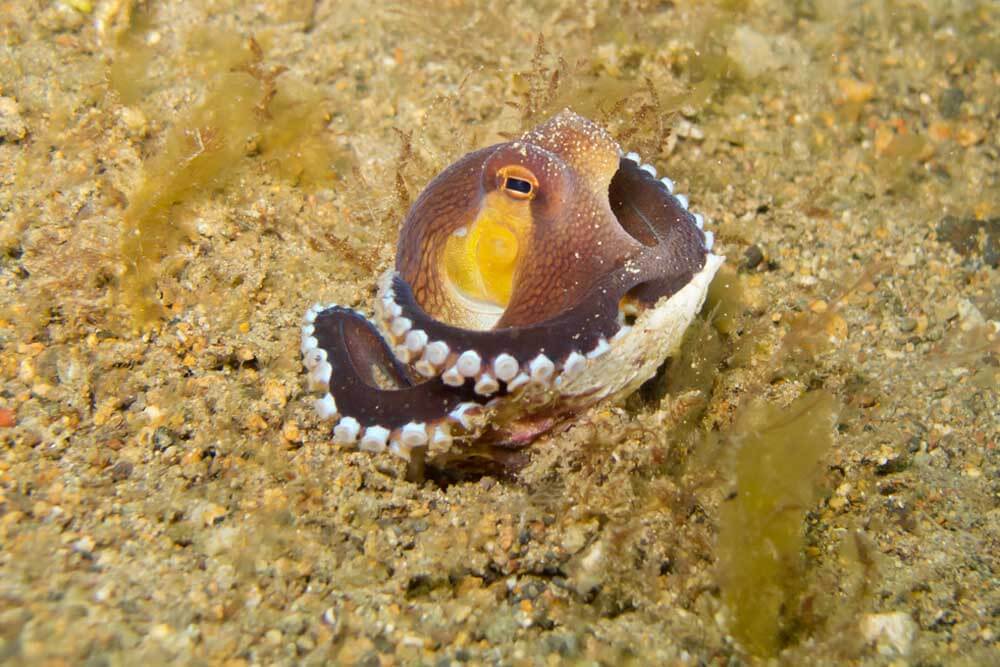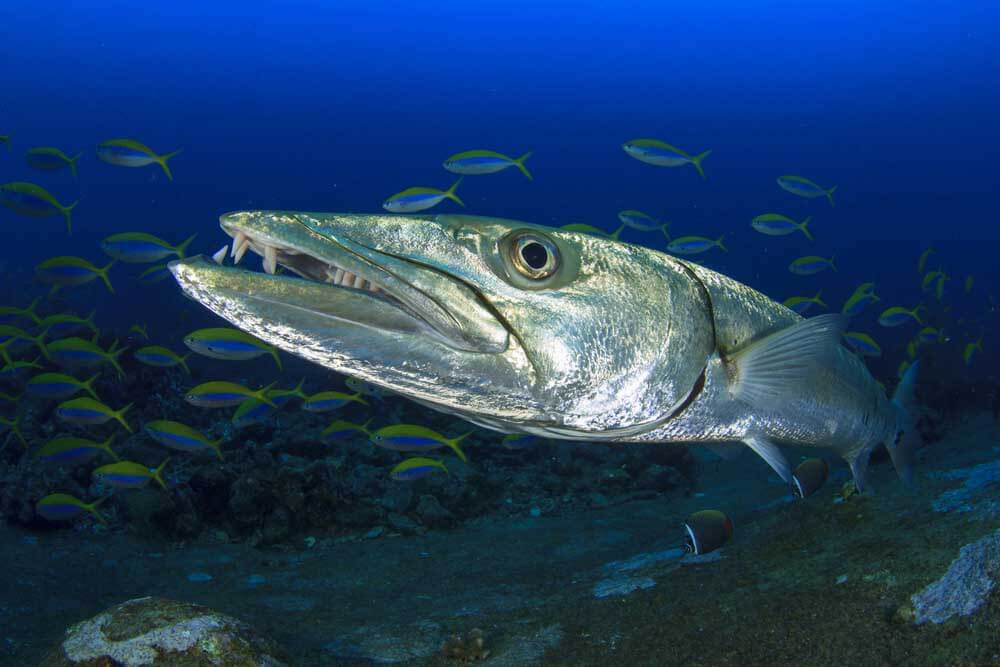
Being at the heart of marine biodiversity in the world, there are hundreds of great dive sites in the Philippines from high energy drift dives to historic wrecks to deep dives. There are great spots to find wonderful marine creatures for macro photographers and some cutting edge exploration opportunities for tech divers wanting to penetrate the deep wrecks. The Philippines has the best for all types of diving…
MALAYAN WALL | TUBBATAHA REEF | PALAWAN
Max Depth 40m | Advance | Reef | Visibility 15m

Tubbataha is only accessible by liveaboards – it lies 80 nautical miles south-east of Puerto Princesa City in Palawan. It is only dived between the months of mid-March to mid-June, due to the seas being too rough to cross. The Tubbataha Reefs National Marine Park was included in the UNESCO World Heritage Site in 1993 and has been nominated to be one of the New Seven Wonders of Nature. The reef starts at a depth of 15m and slopes down to 25m before changing into a wall with a drop off to over 50m. Due to possible strong currents, the majority of the dives are drift dives. In the shallows, you can expect to see more than 350 species of coral, and a huge diversity of small reef fish (almost 500 species). Reef sharks, tuna, groupers, barracudas are common and mantas are almost a given around the full moon. If you are lucky there is also the possibility of seeing whales, hammerheads and thresher sharks.
MONAD SHOAL | MALAPASCUA | VISAYAS
Max Depth 20m | Advanced | Shark Dive | Visibility 10-15m

Monad Shoal is a sunken island and is one of the few known cleaning stations used by thresher sharks. But they get there really early so expect to be on the reef by 5am! There is a very high chance that you will see manta rays at the same time. Moreover, there is not a huge amount of coral on top of the sunken island but there is a great location for macro photography as there is a vast array of critters, ranging from pygmy seahorses, nudibranchs, mantis shrimps and more. Currents can be strong in some areas, but nothing that a confident beginner should not be able to cope with.
CROCODILE ISLAND | BORACAY | VISAYAS
Max Depth 20m | Intermediate | Wall | Visibility 20m

Currents can be strong on what is considered the best site in Boracay – so it is recommended that you dive at slack tide, but it will still be a drift dive. Crocodile Island, as the name suggests, looks like a reptile’s head from a distance. It is a gently sloping wall with beautiful canyons and caves which are covered in corals and sponges, you are able to see lobsters hiding in crevasses. This is a great place to see sea snakes, nudibranchs, lionfish, scorpionfish, moray eels, as well as huge gorgonian fan corals.
SAHARA DEEP | DAUIN | VISAYAS
Max depth 30m | Intermediate to Advance | Muck | Macro

At a maximum depth of 30m, Sahara Deep is one of the deeper muck diving sites and a great spot for underwater photographers. Flamboyant cuttlefish, ghost pipefish, devilfish and other macro stars inhabit the site. There’s also a car wreck which is home to crabs, nudibranchs and other critters.
OKIKAWA MARU WRECK | CORON BAY | PALAWAN
Max Depth 26m | Beginners to Advance | Wreck | Visibility 5-15m

Okikawa Maru is the largest wreck in Coron Bay, formally it was a civilian tanker that was sunk in the Second World War in an American air raid. It is 160m in length and sits in 26m of water, with the top deck at 12m. You will want more than one dive on this beast. It’s great for beginners who can stay on the outside of the wreck and the more experienced can penetrate the vast hull through the propeller shaft and into the engine room. There is also a swim-through in the blast crater. This wreck is covered in hard and soft corals and has resident groupers and sweetlips. Watch out for strong currents.
NAPANTAO | SOGOD BAY | SOUTHERN LEYTE
Max depth 50m | Intermediate to Advance | Wall | Visibility 30m

Napantao is a majestic wall dive starting at a depth of 12m and drops down to about 50m. The rocks are covered in coral, sponges and large gorgonian fans. Napantao is one of the oldest marine reserves in the area and the site is teeming with life as a result. Clouds of anthias whizz around the reef wall and giant frogfish are often spotted clinging to the wall. The current here can be strong which attracts whitetip reef sharks, tuna, Spanish mackerel and other pelagic species, including whale sharks.
HUNTER ROCK | APO REEF | MINDORO
Max Depth 20m | Advance | Pinnacle | Visibility 30m

Hunter Rock is a pinnacle reaching up to the surface and is positioned 10 miles north of Apo Reef. The whole reef is famous for its marine life and drop-offs down to 80m. Apo reef achieved National Park status in 1996 and the best time to dive here is during June-July due to thousands of sea snakes gathering to mate. There are more than 300 different fish species and 500 different coral species, as well as green turtles and hawksbill turtles and there is always a chance of seeing sharks and mantas. It is advised to go between the dry months of December to May, but it can be dived all year round.
SECRET BAY (MAINIT POINT) | ANILAO | LUZON
Max Depth 6m | Beginner | Muck | Macro

This is the perfect spot for muck diving and for macro shots, as it starts at 6m on dark sand and drops down to 20m to red pebble shingle so also perfect for beginners. It has everything you would expect from a muck dive from ghost pipefish, frogfish, blue ring octopus, Coleman shrimp, nudibranchs and the wunderpus octopus.
BLACK FOREST | BALICASAG | BOHOL
Max Depth 40m | Beginner | Reef Slope | Visibility 15-30m

Novices are encouraged to stay close to the dive master as this site can have a strong current. Starting in deeper waters at 40m you will find a colony of garden eels as you get shallower up to 30m you will find forests of black corals with yellow tips which will end at around 30m. The whole of the slope is covered in corals and small reef fish, you will also find Napoleon wrasse, schools of barracudas, groupers, tunas and much more.
THE CANYONS | PUERTO GALERA | MINDORO
Max depth 35m | Intermediate to Advance | Drift | Visibility 20m

Often considered to be one of the area’s best dives, the site is comprised of three underwater canyons. Fast currents allow experienced divers to drift past beautifully overgrown walls and overhangs and attract large pelagic species. Schools of barracuda, trevally and snappers are among the regular encounters.







